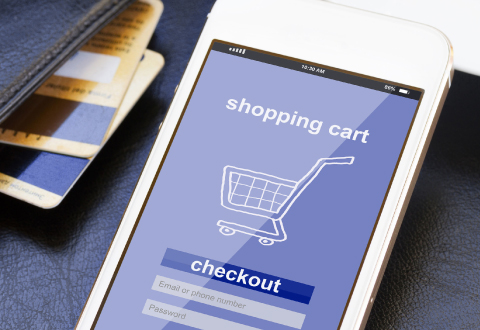7 Powerful Strategies to Improve Your ECommerce Site
What does the phrase e-commerce bring to mind? Amazon? Ebay? Steam? Most people know the big names, and understand that it refers to buying and selling products and services online. What they might not understand is that the concept of e-commerce has grown immensely in recent years. Most business, be they large or small, perform at least some transactions online, whether business to consumer or B2B services and products. Even local brands and indie bands can set up a small e-store to sell merchandise directly to their followers.
It’s an amazing opportunity, but the sheer size of the market makes for a lot of competition and ample opportunity to make mistakes. If you’re just starting out, the overwhelming choice is enough to freeze your efforts in their tracks. You’ll have to work smart if you want your e-commerce strategy to succeed, so today, we’re going to cover seven essential steps for improving your site, increasing your revenues, and rising to the top of the e-commerce ladder.

Strategy #1: Use The Right Platforms
It seems like such basic advice, but you’d be surprised how often e-commerce efforts are starched simply through choosing the wrong solutions. Not all e-commerce platforms and merchant services are created equal. You’ll have to make sure you’re choosing the ones that provide the features you’ll need to get ahead. Now, we’re not going to tell you exactly which services to use (there are a lot of great ones out there), but we can clue you in on what to avoid and what features to look for when making your decision.
In general, you’ll want to avoid any solutions that are “built in” to the service that you host your website with. These aren’t always bad, per se, but they aren’t as specialized as a third-party option will be. The true big boys of e-commerce focus on their particular fields. If you need a method for processing online transactions and credit cards, for instance, go with a specialty service that built themselves from the ground up to do so. Their expertise is more likely to ensure that the system works correctly, you can get support when you need it, and they can score you the most advantageous fees and transaction rates for their services.
Business News Daily breaks down the selection process into three easy to remember questions that you might want to ask yourself while looking at different e-commerce providers:
- What is your budget?
- What type of products are you selling?
- What features does your online store need?
Once you’ve narrowed down your focus, it’s a simple matter of finding the platforms that fit your criteria. This methodical approach to decision making is a big part of what will get you ahead in the e-commerce game, so remember it well as you implement some of the other strategies on our list.

Strategy #2: Tighten Up Your Design & User Experience
What do you do when you end up on a sloppy, slow moving website? You head for the hills by clicking the back button as fast as you can, that’s what. Expect visitors to your site to do the same if you haven’t invested any time into creating a functional and presentable product.
To increase conversions, you’ll need to start by doing three things. First, you must make sure that your store is laid out in a style that is visually appealing and that your customers can instantly learn about your product/service. This requires an understanding of design, so your options are as follows:
- Brush up on your web/graphics skills
- Hire a killer designer to create your layout
Now, we’re not saying that “out the box” solutions have no place. “E-commerce site builders” and other newbie-oriented “plug-n-play” services can get you something functional, and they are a prime option if you’re just starting out, looking to implement a budget friendly solution, or just need something quick/easy.
For the best e-commerce site, though, you should seriously consider starting from scratch. As others have learned, this is the most effective method for giving yourself complete control over every aspect of your site. You can fine-tune details to such a degree that your visitors will swear the site was custom built just for them. For big or soon-to-become-big business, this is the way to go to ensure that you appear professional grade.
The second half of this equation is making sure that your site is fast and isn’t suffering from lengthy outages. To achieve this, you have to invest properly in the right web host. Trying to cut corners with discount servers is a surefire way to repel potential customers. Look for VPS or dedicated web hosting that provides ample web and computing resources, fantastic uptime, and excellent page loading speeds.
Lastly, you have to build trust and confidence in your site by incorporating high-level security features. Read up on the latest and greatest in web security, weave it all into your site, and make sure that necessary badges and certificates are displayed when potential customers access your store. This will make them more apt to make purchases, as they will feel more secure in entrusting you with their payment and personal details.

Strategy #3: Keep It Seamless
This applies mainly to larger organizations that have a physical component to their business in addition to the virtual store. Blending these two experiences will aid your consumers in finding products, learning about deals, and obtaining everything that they need. In the business, it’s called the “Omni-Channel” experience, and it’s taken over the current retail landscape.
Experts have written at length about who’s doing it right, and one key facet links the top performers together: mobile capabilities. The pros predict that customer’s reliance on smartphones for shopping will continue to increase, so allowing access to every facet of your business from mobile devices is going to be one of the keys to success here.
You’ll also have to take into consideration that many shoppers like to research online, then head to the store to pick up their products. Ensuring that your web-store offerings match your in-store inventory is crucial, as is crafting the online component of your business to drive conversions and encourage customers to take a trip to your physical location to complete certain transactions.

Strategy #4: Pay Attention To The Data
If you aren’t taking advantage of analytics to learn more about your consumer base, you’re doing it wrong. Collecting data is vital to learning about customer trends. You need to know what consumers want to buy, when they are most likely to purchase, where they like to buy, what payment methods they prefer, and anything else that will give your a leg up in predicting their behavior.
May e-commerce platforms have analytics functions built-in. Take advantage of those, and keep your eye on third-party options that can further enhance your capabilities. The data-lords over at Google have written a handy guide to get you started, as have the friendly folks over at Kissmetrics. There’s a lot of information to absorb, but understanding “shopping behavior” is going to give you a competitive edge in finding your place in both the online and offline marketplace.

Strategy #5: Target The Consumer Directly
A side effect of having all that juicy data is knowing which segment of your consumer base will respond to which marketing strategies. Don’t go with a one-size fits all, “shotgun” advertising approach. Customize your ads to have the maximum effect.
For example, let’s say you’re a clothing retailer, and you’re bombarding everyone with ads for tight, trendy, lady-jeans. Great for your female consumers, but not as apropos for your male consumers. Instead, mix things up, showing your male clothing to male consumers, and the women’s clothing to the ladies.
A simplified example, for sure, but implementing a precision approach will ensure that you hook more customers with “tailor-made” temptation designed to speak directly to their needs as a consumer. Customers actually enjoy feeling catered to, and this is a guaranteed way to let them know you’re paying attention.

Strategy #6: Make It Personal
Generic, impersonal correspondence immediately signals to customers that they don’t matter. In the digital age, engagement is the name of the game. This means keeping your message positive, leveraging social media correctly, and showing that you care about your consumers on a more personal level.
There are plenty of approaches you can take. Forbes has an excellent 6-point plan that will help you kick things off. Remember to treat your customers like people (something that should go without saying), address them by name in emails, and find other creative ways to put the personal touch on every single one of your engagement methods.

Strategy #7: Go After Those Abandoned Carts
A potential customer browses your site, loads up their shopping cart with a few purchases, but fails to follow through. Oh well, guess that’s a customer lost, right? Wrong. You can (and should) pursue “abandoned carts” as the potential revenue is substantial.
First, make sure that your shopping cart is easy to navigate. Putting hurdles in the way of checkout is one of the primary annoyances that causes consumers to “tap out” and abandon the process. Cut down on the endless forms, implement a plethora of payment options, and watch your failure rate decrease.
For those that still abandon ship, hope is not lost. There are plenty of ways to win back customers, chief of which are friendly reminders that they haven’t made a purchase. You needn’t go through the hassle of sending these out yourself, though. There are plenty of add-ons and third party software that will help you draft, schedule, and send the perfect reminder emails to re-engage those more elusive consumers.